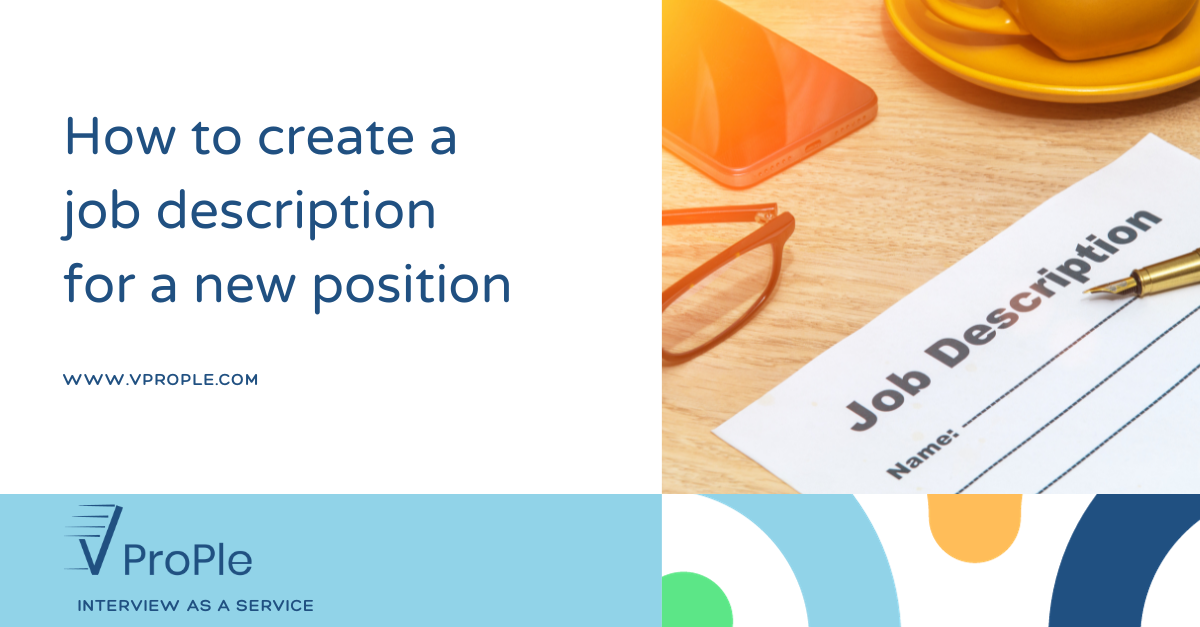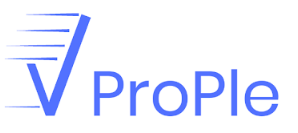This website use cookies to help you have a superior and more relevant browsing experience on the website.
How to create a job description for a new position
-
26/10/2023

The
art of JD’ing
Writing
a job description (JD) well as for any job opening, not every piece would fit
the puzzle. The JD would bring the right missing piece to fix the puzzle. A
clear Job description (JD), shaped by interview experts, is half the process
done. It’s a map for multiple audiences, including interview panels, candidates,
and screening teams. It’s meant to address diverse requirements, as advised by
interview experts.
For whom
is the JD prepared for?
JD
is addressed to three categories of people. So, when a JD is prepared, we must
make sure that all three following teams’ perspective is addressed:
1. For the panel who takes the interview, it’s the direction on how to take
the interview.
It’s
not always the person who writes the JD who takes the interview are same; one
may describe the requirements others would join in the selection process. Unless the requirement is very generic; the JD should give the complete picture of the right candidate. The questions or the approach can vary from panel to panel, but the evaluation criteria must not be compromised.
2. For the candidate, It’s the face of the prospective role/organization.
Every
candidate when approached for a position; first looks at the organization then
the JD. JD also serves as the face of the company and the project that the candidate would be a part of. Complete precise JD with all detailed parameters and expectations gives the candidate a clear picture of the roles and
responsibilities of the candidate for the job position. Such precise JD helped
the candidates make an informed decision about it. Furthermore, it fosters confidence on the candidate towards the new position thereby giving him the motivation to prepare for the interview diligently.
In many cases, candidates skips the interviews at the last moment because they are not sure about the job role and scope. This issue can be easily avoided with a precise JD. While going through the JD if the candidate
feels that it is a perfect fit, then the candidate will come to the interview with the appropriate intent and confidence. On the other hand, for the organization, it means it is able to attract the right profiles. In such circumstances, the chances of candidates accepting the offers become higher.
3. The HR team does the initial screening, it’s the
guideline to screen the profiles.
An
HR team, that deals with multiple domains and skills, uses keywords from JD as
the filter to screen the candidates. A glance at the JD absorbing the keywords
and key requirements is the move to search for the needle in the haystack.
Unless the pointers are evident, they would end up in fishing out a wrong set
of profiles bound to be rejected and thus a waste of time for multiple teams.
Who prepares the JD for a job position ?
A
perfect JD brings the right candidate one step closer to the open position.
Ideally, it should be prepared by a person while taking in the candidate for his team. But in most of the cases, a template is sourced and then modified/ tailored to the
requirement. It’s never easy bringing every little nuance of the job requirement into the description. But this is the first and foremost step of
any recruitment process. Candidates are filtered based on the keywords; candidates
apply based on the requirements interviews are conducted mostly with the JD as the reference against the CV and performance of the candidate.
How to create a JD and what a JD should cover?
Since it’s not always the same person who prepares the JD takes the interviews the job description must be precise but should cover all the expectations. Irrespective
of how good the interview Expert may be, if the parameters of evaluation are
not stated clearly, it is difficult for them to make a good assessment for selection. On the other hand, an average interview panel can make an accurate selection if the parameters are well-defined.
It
should ideally speak about;
The
organization: A well-rounded job description not only outlines the specific
job responsibilities and qualifications but also paints a vivid picture of the
organization itself. This helps candidates make an informed decision about whether the company aligns with their values, career goals, and work
preferences.
The relevant experience: The required experience if broken down skill based on a higher level; with the relevancy would nail the JD.
Work mode: With the online mode setting in, any candidate first looks in the mode and that is often the question in the list from candidate to HR after ticking the other aspects, it is covered in the JD; the candidate would have an easier decision to make.
At time the interview progresses to many a level and
gets stopped at the end as the candidate’s expectation of the work mode doesn’t
match. If a clear stance is taken a conveyed can avoid many
missed-when-almost-hired situations thus saving a lot of time and energy for
the stakeholders.
-
Work from home
-
Offline
-
Hybrid
Work
type: This again is another point in most of the candidates’ checklists; if
the expectations and offerings are made clear it would save a lot of bandwidth
for the hiring team.
-
Permanent role
-
Contract role
-
Freelance role
Role
type: These details of the type would help the candidate to understand if he is moving forward in a similar role or
if he is being offered more. Also, the panel would understand the type of
interview he is expected to conduct
-
Individual contributor
-
Lead
Role
in project
-
Client facing
-
Internal
Methodologies
-
Agile
-
Scrum etc.
Skill
type: These details account for the maximum
weightage on the JD for the interviewer, candidate, and screening team alike
followed by its weightage.
-
Mandatory
-
Desirable
-
Added advantage
Skill
weightage
-
Basic knowledge
-
Exposure
-
Experience
-
Proficiency.
These are a few categories, not the exhaustive list. Each detail should help the candidate attain a better picture of the requirement. Even topics like culture, ethics, and communication skills can be evaluated during the skill assessment itself, but these criteria should not
direct the course of technical rounds.
Many a stance, the importance of the JD is overlooked. It should be evaluated deeper than the existing ongoing templates with a little tweak here that’s all. The impact of well-rounded curated and calibrated JD not
only attracts the right profiles but also creates a positive interview experience
thereby amplifying overall great company culture and brand value in the market.
Every JD needs to be
custom-made keeping in mind the hiring team, the interview panel, the candidate,
and the screening team. Few interview outsourcing companies specialize in
creating customized JD and the impact of the same is visible in the overall
selection process thereby establishing the fact that precise JD only captures
the attention of the right talent but also saves the bandwidth of multiple
teams involving the selection process.


